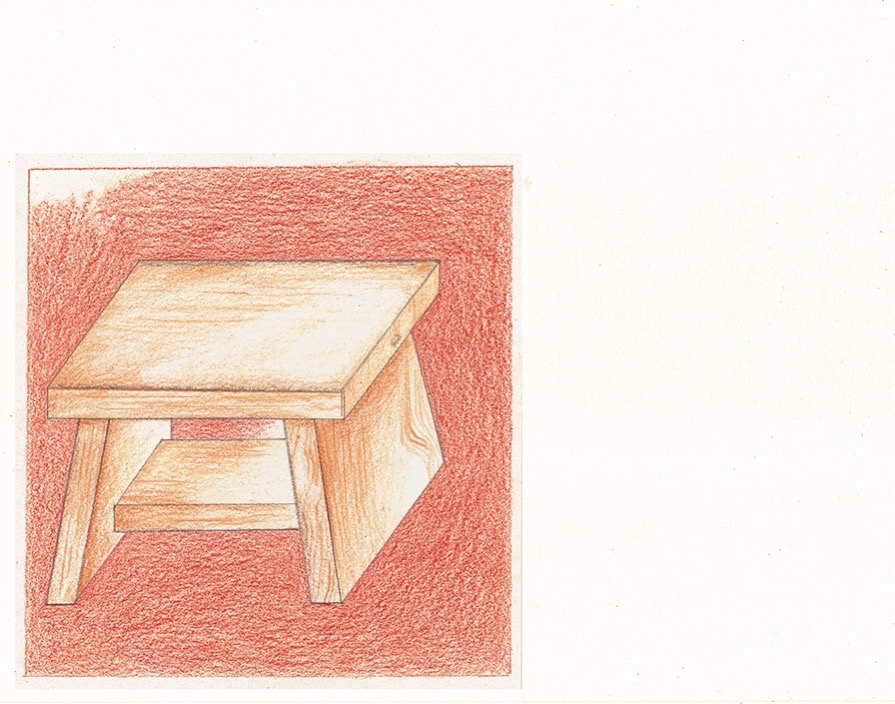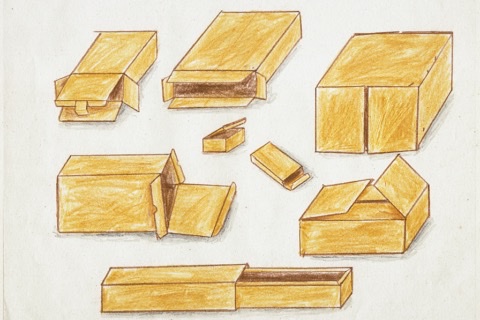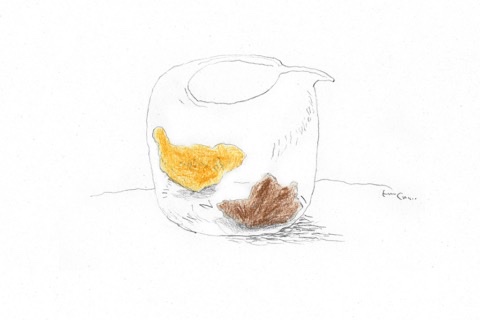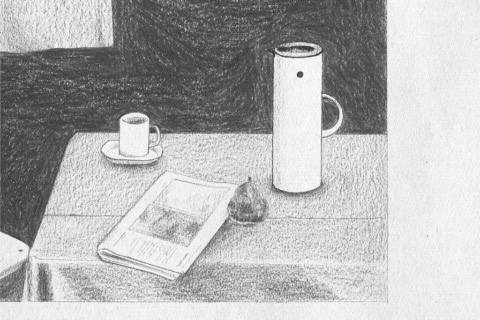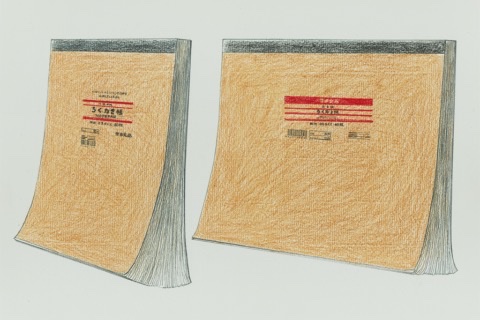
「回憶猶在。是模糊又飄忽,或是清晰並留下烙印。是遺下緊迫感的心情,還是不安,又或是幸福與歸屬感。一如往常,物件棲息於記憶之中。我坐在床側的涼快地板上閱讀。窗是敞開的,窗簾隨著微風飄搖。父母讓我獨自留在房內。我沒法確定,這個房間是否真實存在。不論真實還是想像,有些房間,有些時刻,甚或是有些光的面貌,總在心內縈繞不去。」
美國插畫家Maira Kalman在其著作《My Favorite Things》內,寫了以上一段關於憶及童年物件的片段。她所描述的那種似有若無的感覺,我一直深有共鳴。三歲多以前,我和爸媽、弟弟、嫲嫲和兩位姑姐一起同住;對於這段日子,我是幾乎完全沒有記憶了,唯獨有一則關於嫲嫲的小片段,總會間或在午夜夢迴重覆播放:夜闌人靜,小小的我坐在小小的紅色膠矮凳上瞪著電視看得入神,坐在後方沙發的嫲嫲突然起來把電視關掉,再把客廳的燈關上,然後轉身走往睡房方向;瞬間被漆黑籠罩的我立即跑到爸媽的睡房前,咚咚咚地用力拍門之際,回首窺見嫲嫲站在自己的睡房前,靜靜看我。
到底這段回憶是否確曾發生過呢?我一直心存疑問。可是,母親跟我說過,紅色膠矮凳的而且確是因為嫲嫲知道我愛黏在電視機跟前,專程買來給我坐著看電視的。其後,膠矮凳一直伴隨著我長大,即使嫲嫲過世多年,它一直都是確實地存在著,有時讓童年的我閒在露台乘涼,有時候又默默充當少年的我的腳踏。它就這樣子久經歲月的洗禮,殘破得甚至出現了一道很深的裂痕,今時今日仍默默守在我母親家裡的某個角落。也許是出於對膠矮凳的眷戀,我在替蔦悠尋找合適的小椅子時,搜索了良久,終於找到這張以香柏木製造、東屋出品的風呂椅子。插畫師Furze把這張椅子的繪圖電郵給我時,便跟我說她刻意將它畫在圖的一角,是因為她認為這種小椅子通常喜歡在某個角落出現。沒錯,那就應該是一個窩心的角落,如夢似幻地交織著不同年月的生活片段,讓細細碎碎的微弱回憶像小塵埃般聚集起來。
風呂椅子的原意是讓人們洗澡時坐著擦身,可是我覺得只讓它待在浴室內實在是太委屈了。它的材質如此堅固,高度又剛巧十分適合讓小孩子當作矮凳使用,讓它成為蔦悠的專用椅子便最適合不過了。若干年後,當蔦悠伸手觸撫這張木椅時,那便一如撫摸童年般,美好的回憶猶在,溫暖而又確實存在。
“There are memories. Vague and fleeting. Or sharp and searing. Moods leaving a sense of urgency. Or disquiet. Or a sense of well-being and belonging. And always, objects inhabit the memories. I am sitting on the cool floor next to a bed, reading a book. The window is open and the curtain billows in the breeze. My parents have left me alone in the room. I am not sure there was really a room like that. There are some rooms, real or imagined, some moments, some aspects of light that haunt you.”
In her book, My Favorite Things, the American illustrator Maira Kalman wrote the above paragraph recalling her childhood objects. I always have a deep resonance with such seemingly incomprehensible feeling which she describes. From birth till the age of three, I had lived with my parents, my little brother, my grandmother and two aunts. I almost have no memory of this period of time, but there is one snippet about my grandma that has been playing repeatedly in my dreams: It was quiet at night, I was sitting on a red plastic stool and watching TV intently. Grandma, who was sitting behind me on the sofa, suddenly stood up and went to turn off the TV and light. She then walked towards her bedroom. Surrounded by darkness all of a sudden, I immediately went to bang on my parents’ bedroom door, while grandma stood in front of her bedroom and watched me silently.
Has this recollection ever happened? I have always doubted about it. However, my mother has told me the red stool was indeed bought by my grandma because she knew I loved sitting in front of the TV all day long. From then on, this plastic stool has been growing up with me. Even after many years since my grandma’s death, it still exists. It has allowed me to sit on it at the balcony during hot summers when I was a child. It has also faithfully acted as my foot stool when I was a teenager. Having been at my service for so long, it has become very worn out with a deep crack, and it is now sitting quietly at a corner in my mother’s house. Perhaps due to my attachment to it, while I was searching for a small chair for my son Julian, it has taken me a long time to finally settle with this Azmaya bath stool made of hinoki wood. When Furze, our illustrator, emailed me the drawing of it, she told me she has deliberately placed it at one corner because she believes that is where a stool loves to be. Indeed, that should be a corner with great warmth, dreamily weaving with various fragments of life, so that bits and pieces of faint memories gradually gather together like a ball of dust.
The original purpose of a bath stool is for a person to sit on it and brush his/her body during bathing, but it seems such a pity to let this beautiful stool only to stay in a bathroom. Made with sturdy wooden material and the perfect height for a small child to sit on it, no doubt it would be the most ideal chair for my little son. Many years from now, when Julian touches this stool, I hope it would feel like gently stroking his own childhood, where beautiful memories remain, warm and palpable.
